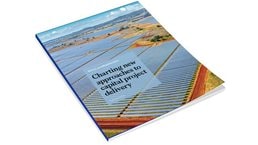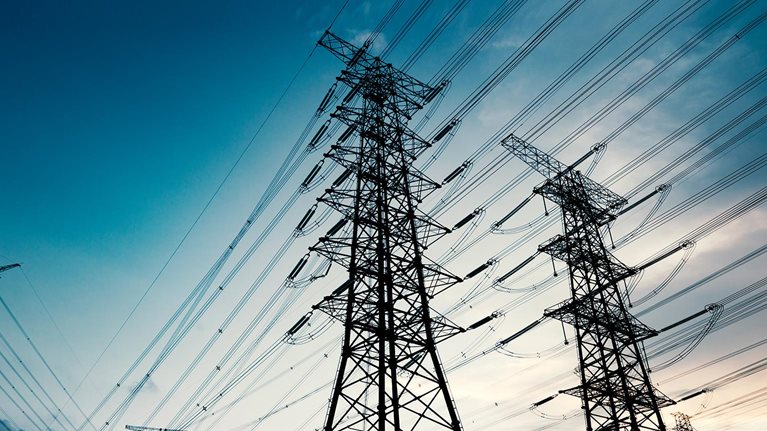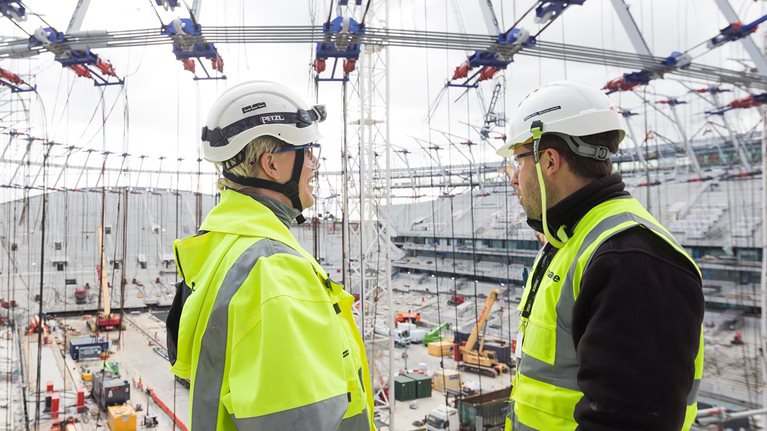In November 2021, 120 world leaders representing 197 states converged in Glasgow for the COP26 UN Climate Change Conference.1 There, they discussed the next decade of climate action and support needed to meet the 1.5° objectives of the Paris Agreement.2 For hard-to-abate industries, such as construction, reaching net-zero carbon emissions won’t be easy. Strategic changes are required to prioritize projects and deploy capital as needed; developing policies and incentives around new technologies and innovations can help.
To learn more about the roles investors play in these developments, McKinsey’s Tony Hansen spoke with Emmanuel Jaclot, executive vice president and head of infrastructure for Caisse de dépôt et placement du Québec (CDPQ).
McKinsey: What are the biggest challenges or obstacles to achieving our net-zero aspirations?
Emmanuel Jaclot: Net zero needs to be more than an abstract objective. It needs to translate into real, concrete actions—and fast. Take energy as an example. According to a report published in May by the International Energy Agency (IEA),3 we won’t hit net zero by 2050 unless we triple annual clean-energy investment worldwide in the next few years.
As a long-term investor, one of the challenges [for our company] is delivering on our promises and deploying capital in the value chain as quickly and as early as possible. It’s important to understand that renewable energy—solar and wind—by itself will not allow us to reach net zero. Investment in new technologies and innovations, such as batteries, green hydrogen, and carbon sequestration, will be essential. And policies and incentives to develop these sectors could greatly help accelerate their implementation.
Moreover, we need to work on the transition of the economy as a whole—not only by increasing the number of green assets but also by reducing the carbon footprint of high-emitting sectors. I believe we must consider current and potential impacts from the climate crisis on populations. If we want to achieve a transition to net zero, it needs to be a just transition.
McKinsey: What strategic changes will be required by investors and the infrastructure industry to scale up to meet net-zero targets?
Emmanuel Jaclot: The sense of urgency was evident at COP26: we have no choice but to cut emissions in half by 2030 for the world to reach net zero and limit the temperature increase to 1.5°C. Thus, investors must have the capacity to measure precisely where they are in the energy transition. This will enable them to set ambitious short-term and intermediary targets and to be held accountable for their evolution.
With those principles in mind, CDPQ launched its new climate change strategy in September 2021, four years after becoming one of the first institutional investors to set targets to reduce the carbon footprint of each of its portfolios. This year, we decided to raise our ambition even further. We aim to hold $54 billion in green assets by 2025 and to achieve a 60 percent reduction in the carbon intensity of the total portfolio by 2030, as compared with our first measures in 2017.
Each investment decision we make considers the climate, and we use climate budgets to track the carbon emissions of our portfolios. We were also the first large institutional investor to tie employee compensation to climate targets. Our portfolio companies are fully aware that ESG [environmental, social, and governance] and the fight against climate change are two of our central priorities.
That said, investing in low-carbon assets alone won’t be sufficient. As a major player in infrastructure investments, we cannot shy away from high-emitting sectors. This includes raw materials—such as steel, concrete, copper, lithium, and structural plastics—as well as transportation and agriculture. Our new climate strategy includes a $10 billion transition envelope to proactively decarbonize these sectors.

Charting new approaches to capital project delivery
McKinsey: How will investors prioritize projects within portfolios and deploy capital at the required pace?
Emmanuel Jaclot: With capital needs growing exponentially and competition and ticket sizes increasing, investors need to consider new approaches. One of the strategies we’ve found to be effective is forming long-term partnerships with recognized, like-minded players. For example, last year we joined Ørsted and Cathay PE in a major investment in the Greater Changhua 1 offshore wind farm in Taiwan.
We’re also looking at new sectors, such as sustainable land management and green hydrogen, and considering new approaches. For example, we’ve created a $500 million platform for innovation in stewardship investing (ISI), which has allowed us to create new partnerships and expand our expertise in emerging fields. It has also created business opportunities in key sustainable-economy sectors.
McKinsey: What role can technology play in increasing the sustainability of projects and how we measure performance?
Emmanuel Jaclot: First, let me say that we can’t bank only on disruptive innovations to address the climate crisis. Beyond renewables, storage, and energy efficiency, new and diverse technologies will be needed to achieve net zero. Key sectors such as biofuels, batteries, carbon capture, and hydrogen have the potential to tremendously change carbon emissions.
Innovation in construction will also play an essential role in directing more capital toward the energy transition. For instance, modular, offsite design or 6-D building information modeling (BIM) solutions are both techniques that can substantially increase projects’ sustainability. At the same time, they can bring down life cycle costs and reduce the risks of greenfield projects for investors like ourselves.
We want to support the development of innovative solutions to accelerate the energy transition. With this in mind, CDPQ has invested in companies such as Energize Ventures, a leading global alternative-investment manager that funds digital-first solutions.
McKinsey: What new financing approaches will be required to develop projects?
Emmanuel Jaclot: Governments alone won’t be able to deliver sustainable infrastructure at the pace and scale needed to address the rising risks of climate change. Long-term institutional investors represent one of the largest capital pools available and can play a major role in financing infrastructure essential for a more sustainable, low-carbon economy.
The public and private sectors can also work together to derisk investments while pursuing net-zero objectives. Besides classic public– private partnerships, a good example is the Réseau express métropolitain (REM), Quebec’s largest transit transportation project of the past 50 years, which is set to open in Montreal later this year. The REM was entirely developed by CDPQ Infra, one of our subsidiaries. We’re acting as a principal contractor by taking on the planning, financing, execution, and operation phases. And our presence at each step of the project ensures the efficiency and quality of the work as well as its integration into communities.
McKinsey: How will investors manage the inevitable risk that comes with pursuing net-zero projects?
Emmanuel Jaclot: Climate change has the potential to disrupt companies, sectors, and communities. In the long term, it will have consequences for the value of every infrastructure asset, so we need to be able to evaluate how to build a sustainable and resilient future.
At CDPQ, the assessment and management of climate risks and opportunities are fully integrated into our processes. We ensure rigorous monitoring of climate risks—both physical risks and risks from the transition—which are the subjects of specific sections in the investment approval and accountability documents. We subject these risks to the same governance processes as other types of risks. Disclosures are also critical; we follow the Task Force on Climate-related Financial Disclosures’ [TCFD’s] recommendations, a global standard for investors.
Finally, our risk management considers the 1.5° objectives of the Paris Agreement as well as a series of scenarios from recognized sources, such as the IEA. We also work with our peers, remaining on the lookout for methodological developments for risk assessment and developing comprehensive tools for investors and companies alike.
McKinsey: How do we make progress if the policy and the supporting regulations are lagging?
Emmanuel Jaclot: Investors can help move society forward by directing capital to sectors with enormous infrastructure needs, such as sustainable mobility. We know that we can increase our impact by collaborating with likeminded groups. That’s why we’re cofounders of two groups of leading global investors, the Investor Leadership Network and the Net-Zero Asset Owner Alliance, both of which work to tackle climate change issues and influence the development of policies and regulations toward a net-zero economy.
Here in Canada, CDPQ has also been involved in two expert advisory bodies for both the federal and Quebec governments. We work with actors from different sectors and organizations to ensure that all views are included in the decision-making process. Climate change will affect all of us—and everyone is responsible for taking action.
Comments and opinions expressed by interviewees are their own and do not represent or reflect the opinions, policies, or positions of McKinsey & Company or have its endorsement.


